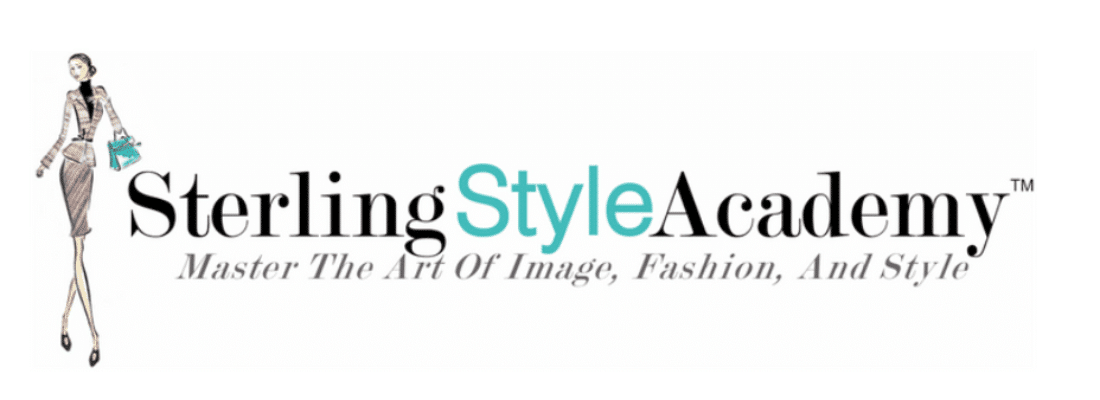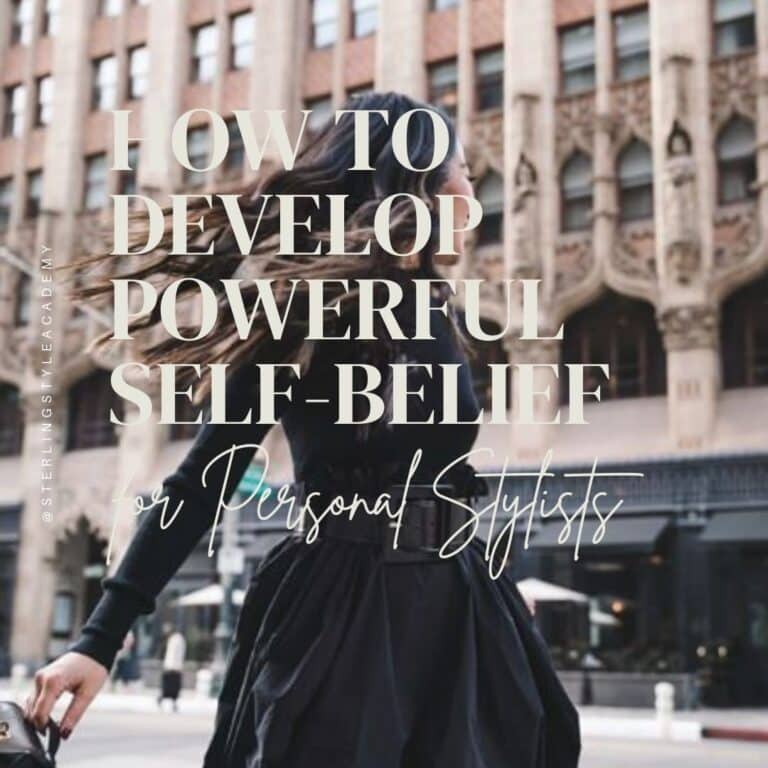How to Start and Succeed in Styling: Everything You Need to Know
Styling has grown into a thriving career field, driven by the rise of social media, personal branding, and high-demand industries like fashion and entertainment. If you’ve been wondering whether stylists are in demand or how to break into this creative industry, this guide will walk you through it all—from understanding what stylists do to how they make money and the qualifications you need to get started.
By the end of this article, you’ll have a clear roadmap for starting your styling career and turning your passion into a paying job.
- Are Stylists in Demand?
- How to Become a Paid Stylist
- Do You Need Qualifications to Be a Stylist?
- What Is the Difference Between a Stylist and a Fashion Stylist?
- How Do I Start a Career in Styling?
- What Is a Freelance Stylist?
- How Do Stylists Make Money?
- Final Thoughts
- Can a Certified Personal Stylist Make More Than a Stylist Without Qualifications?
Are Stylists in Demand?
Yes, stylists are very much in demand. With industries like fashion, film, television, and the corporate world requiring experts to curate strong personal and professional styles, the opportunities for stylists are plentiful.
The rise of personal branding has also fueled demand for personal stylists, as professionals and influencers increasingly look for ways to stand out. Additionally, styling services are no longer limited to celebrities. Everyday individuals often hire stylists for weddings, events, or even wardrobe overhauls. This broad client base means there’s work available for stylists at every level.
How to Become a Paid Stylist
If you’re looking to turn your passion for fashion or personal styling into a paying career, here’s how you can get started:
- Learn the Basics: Begin with an understanding of fabrics, colors, body types, and current fashion trends. You can do a lot of this research on your own by reading fashion blogs or following industry leaders on platforms like Instagram.
- Build a Portfolio: Whether it’s styling friends or working on small projects for free, start creating before-and-after photos and styling examples to showcase your skills. A strong portfolio is essential for attracting clients and employers.
- Leverage Social Media: Platforms like Instagram, TikTok, and Pinterest are excellent tools to highlight your styling expertise. Consistently share tips, style guides, or photos of completed looks to attract attention and build credibility.
- Network: Reach out to established stylists, photographers, and designers to gain connections and possibly shadow someone already working in the field.
- Offer Services Locally: Start small by offering services like closet cleanouts, personal shopping, or event styling. These smaller gigs will help build your reputation.
- Educate Yourself: Many stylists enhance their skills by enrolling in courses or certification programs for professional training (more on this below).
Do You Need Qualifications to Be a Stylist?
You don’t necessarily need formal qualifications to start a career in styling, but certifications and training can enhance your skills and improve your credibility.
Here are a few paths you can take in terms of education and training, depending on your specific goals:
- Self-Taught Route: You can learn the fundamentals of styling on your own by studying fashion trends, analyzing celebrity looks, and experimenting. This path often works well if you have a natural sense of style and are highly motivated.
- Formal Certification: Programs like those offered by the Fashion Institute of Technology (FIT) or online courses in personal styling can teach you essential techniques and provide you with a certificate.
- Degree Programs: Fashion design, merchandising, or a related degree can give you a strong foundation for working in areas like fashion styling or costume design.
While qualifications can help, what clients care most about is your ability to make them look and feel their best, so experience and a great portfolio often outweigh diplomas.
What Is the Difference Between a Stylist and a Fashion Stylist?
While “stylist” is a general term used to refer to anyone who works with personal image and style, “fashion stylist” is a niche within this profession. Here’s how they differ in focus and work environment:
- Stylist: This term encompasses personal stylists, wardrobe consultants, and groomers. They work with individuals to define their personal style, manage their wardrobes, and create looks for day-to-day life or special occasions.
- Fashion Stylist: These professionals work in the fashion and entertainment industries. They create looks for editorial photoshoots, runway shows, advertisements, or red carpet events. Fashion stylists often collaborate with designers, photographers, and celebrities.
Both types of stylists need a keen eye for detail and creativity, but the environments and client needs can vary significantly.
How Do I Start a Career in Styling?
Here’s a step-by-step breakdown to help you launch your career in styling:
- Define Your Niche: Decide the type of styling you’re most interested in, whether it’s personal styling, fashion styling, or working as a wardrobe consultant.
- Gain Hands-On Experience: Assist an established stylist, volunteer at fashion events, or intern with brands to gain practical exposure.
- Build Your Network: Relationships within the industry are key. Build connections with photographers, makeup artists, and clients to find opportunities.
- Create an Online Presence: Build a professional website and maintain active social media accounts to showcase your work and personality.
- Start Small: Work with individual clients or take on one-off styling assignments until you build enough experience to attract larger projects.
Commit to ongoing learning and adaptability as you grow in your career. The styling and fashion industries are always evolving, so staying informed is crucial.
What Is a Freelance Stylist?
A freelance stylist is independent and self-employed, rather than working full-time for a company. Freelance stylists often offer services such as:
- Styling photoshoots for brands and magazines
- Wardrobe organization for clients
- Personal shopping services
- Event styling or one-off styling needs
Freelancing offers flexibility, as you can set your own schedule and choose the projects you take on. However, it also requires strong business and marketing skills to promote yourself and stay competitive.
How Do Stylists Make Money?
Stylists can earn income from a wide range of services. Here are some typical ways stylists make money:
- Hourly or Session-Based Fees: Personal stylists often charge hourly rates or package fees for services like wardrobe consultations or personal shopping.
- Contracts with Brands: Fashion stylists might secure contracts for editorial campaigns, brand photoshoots, or red carpet styling gigs.
- Affiliate Marketing: Many stylists earn passive income by recommending clothing or products through affiliate links.
- Workshops and Courses: Experienced stylists often teach others through workshops or online courses, generating income while sharing their expertise.
- Consulting: Some stylists branch out into brand consulting, advising businesses on everything from product styling to clothing line development.
The amount a stylist earns depends on factors like location, niche, and client type. Entry-level freelance stylists may earn $20 to $50 per hour, while established professionals can charge significantly more, especially for premium services.
Final Thoughts
Styling is an exciting and rewarding career that offers creative freedom and lucrative opportunities. The demand for stylists continues to grow, and with the right skills and strategies, anyone with a passion for fashion can turn this into a successful career.
Whether you dream of becoming a freelance stylist or working on high-profile projects, the key lies in constant learning, building experience, and staying true to your unique sense of style. Take the first step today, and the possibilities are endless!

Can a Certified Personal Stylist Make More Than a Stylist Without Qualifications?
When considering a career in styling, one of the most important questions to answer is whether certification and professional training impact earning potential. The answer? Absolutely, yes. A certified personal stylist can command significantly higher rates compared to stylists without formal qualifications. Certification and training offer credibility, expertise, and the ability to leverage specialized skills, all of which clients value deeply.
Why Certification Matters
Certification acts as a powerful credential in the styling world. It reassures clients and employers that you have acquired professional training and understand the nuances of styling, from color theory to personal branding. While it’s true that some stylists without formal training can carve out successful careers, they are less likely to achieve the same earning potential as those with certification.
Certified stylists can market themselves as experts in their field, attracting high-paying clients who are willing to invest in proven talent. This ultimately leads to not only higher hourly rates but also long-term demand and career stability.
Earning Potential of Certified Personal Stylists
The earning potential for certified stylists speaks for itself. According to industry figures, certified personal stylists can charge anywhere from $150 to $250 per hour for their services. Those who work with celebrity clients or have built a stellar reputation can earn as much as $500 per hour.
For context, here’s how structured training programs like those at the Sterling Style Academy help personal stylists command these premium rates:
- Online Training programs at Sterling Style Academy equip stylists with skills in image consulting and personal styling. This training typically leads to competitive hourly rates, as clients value the expertise gained through professional development.
Check out our online training programs here. - In-Class Courses provide hands-on experience and networking opportunities, further sharpening a stylist’s ability to deliver high-value results. Graduates of in-class training programs often see even higher rates compared to their online-only counterparts.
Explore our in-class courses here.
The Role of Personal Branding
Another important factor that impacts earning potential is personal branding. Certified stylists who invest time in creating a strong online and offline presence tend to stand out in the competitive styling industry. Your personal brand highlights your expertise and defines your unique approach to styling, making you a go-to professional for specific client needs.
Leveraging social media, maintaining a polished portfolio, and building a network of satisfied clients can help certified personal stylists further enhance their earning power. Clients gravitate toward individuals who not only have certification but also present themselves as stylish, confident, and knowledgeable.
Benefits of Certification Beyond Earnings
While higher earning potential is a key motivator for pursuing certification, there are additional benefits that make it a worthwhile investment:
- Expanded Client Base: Certification opens doors to working with a broader range of clientele, from everyday professionals to high-net-worth individuals and celebrities.
- Career Flexibility: With certification, you can offer specialized services such as wardrobe consulting, personal shopping, and image consulting, giving you a diversified income stream.
- Industry Credibility: Certified stylists are taken more seriously by employers, brands, and industry peers. This can lead to collaborations, partnerships, and referral opportunities over time.
How Certification Compares to Unqualified Stylists
Stylists without formal qualifications often rely on natural talent and hands-on experience to find work. While this can pave the way for success, there are several limitations:
- Without certification, stylists may find it harder to justify premium rates.
- They often lack access to formalized knowledge about style trends, body types, wardrobe structuring, and communication skills, which are crucial in client interactions.
- Opportunities with luxury brands or high-profile clients are less common without demonstrated expertise or recognized credentials.
Certified stylists, on the other hand, are equipped with the tools and confidence to approach these challenges, giving them an undeniable edge.
Taking the Next Step
If you’re serious about pursuing a career in personal styling and maximizing your earnings, investing in a certification program like those offered at the Sterling Style Academy could be your best move. Their robust courses ensure you gain the skills needed to command top-dollar rates and grow a thriving career in styling.
Whether you’re looking to transition into this profession or elevate your existing career, remember that education and self-promotion are key. With the right training and a strategic approach, you too can earn up to $500 per hour and make your mark as a sought-after personal stylist.
Take your first step today. Your dream of a lucrative styling career is just one course away!









